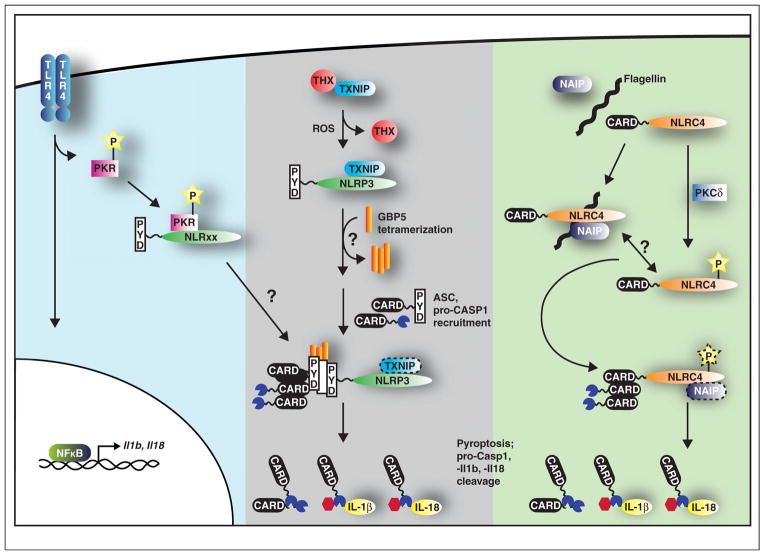Figure 2.
(Blue, left) TLR4 activation induces signaling pathways that upregulate transcription through NFκB. PKR is also phosphorylated upon activation of TLR4 signaling. Binding to NLRP1, NLRP3, NLRC4, and AIM2 enhances inflammasome function. (Gray, middle) The inhibitory association of thioredoxin (THX) to TXNIP is relieved in the presence of ROS. TXNIP is free to bind NLRP3 that enhances inflammasome function. GBP5 tetramerization is triggered by an as yet unknown stimulus that then promotes ASC oligomerization to amplify inflammasome activation. It is not clear if TXNIP remains bound to NLRP3 during this time. (Green, right) NLRC4 activation requires both flagellin and NAIP5/6 to induce an inflammasome response. PKCδ phosphorylation of NLRC4 may also enhance NLRC4 inflammasome activity. The kinetics of the NLRC4 phosphorylation and NAIP association during inflammasome function is not clear. Regardless of how inflammasomes are regulated, their engagement is required for pyroptosis and processing of pro-caspase-1, pro-IL-1β, and pro-IL-18.

